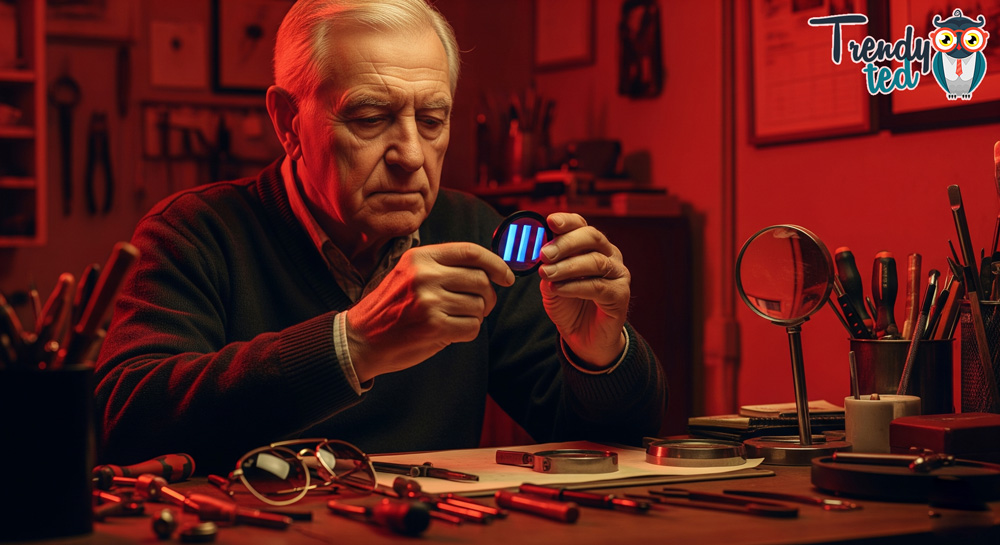4. Examining Lens Quality and Technology
Authentic Ray-Ban lenses are crafted with advanced technology and high quality, distinguishing their performance and durability from counterfeit versions. On our website, you can gain complete knowledge about these two technologies by visiting the articles "What is Polarized Eyeglasses" and "Everything About UV Eyeglasses" in the articles section. Below, we will briefly discuss this topic.

4.1 Lens Material and Feel
Most authentic Ray-Ban lenses are made of high-quality glass, which produces a glass-like sound when gently tapped with a fingernail, indicating their quality and durability. Some models use high-quality plastic or polycarbonate, but these materials still convey a sense of robustness and should not feel flimsy or cheap. Counterfeit lenses are typically made of low-quality plastic that feels unnaturally light or brittle and produces a hollow or plastic sound when tapped. This difference in lens material is a simple but effective way to assess the quality of the eyeglasses.
4.2 UV Protection and Advanced Coatings
Authentic Ray-Ban lenses provide 100% protection against UVA and UVB rays up to 380 nm wavelengths, which is essential for maintaining eye health against sunlight. These lenses are often equipped with high-quality anti-reflective and scratch-resistant coatings that improve visual clarity and increase lens durability. To check for the anti-reflective coating, hold the glasses in a brightly lit environment; authentic lenses will show subtle colored reflections (such as green or purple). Counterfeit lenses usually lack these coatings or use cheap coatings that scratch easily or create strong reflections. To confirm UV protection, you can take the glasses to an optometrist or a store with a UV testing device.
4.3 Features of G-15 and Polarized Lenses
G-15 lenses, used in Ray-Ban eyeglasses since the 1930s, are known for their dark green tint and their ability to provide natural colors and reduce eye fatigue. These lenses are indicated by the code "G-15" on the box and have a uniform green color in natural light. Counterfeit lenses may claim to be G-15, but their color is often unnatural or grayish, and they don't offer sufficient clarity. For polarized eyeglasses, by holding them in front of a digital screen (like a phone or laptop) and rotating them, authentic lenses will show a clear change in light and reduce light reflections. The "P" mark next to the "Ray-Ban" logo on the right lens indicates polarization. Counterfeit lenses often perform poorly in this test or lack the "P" mark.






Comments (0)